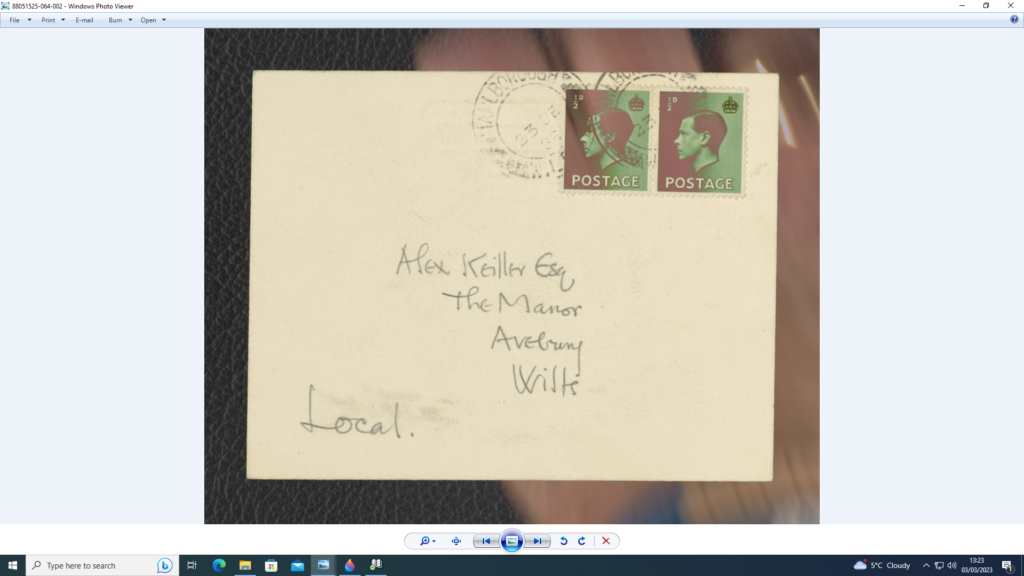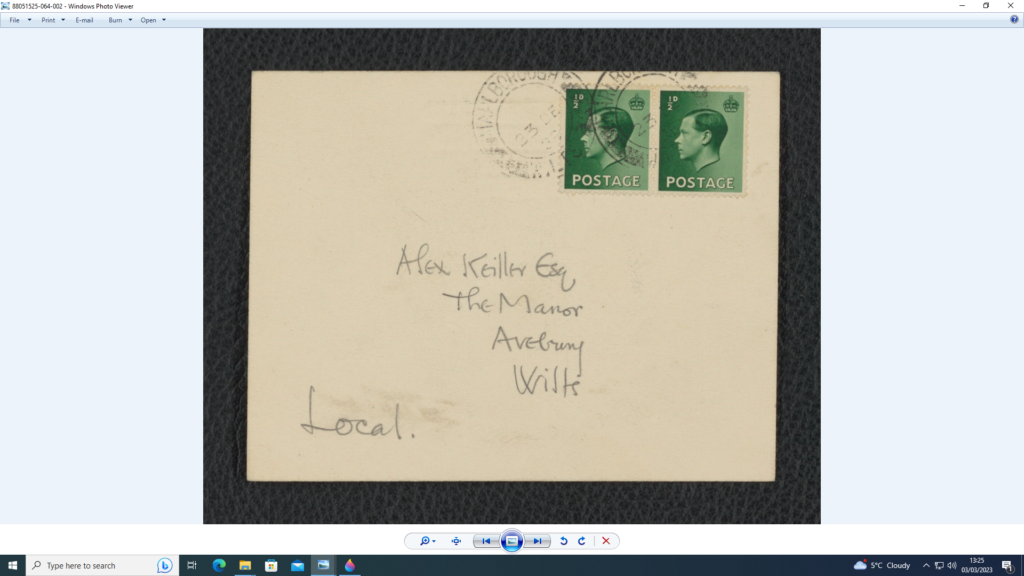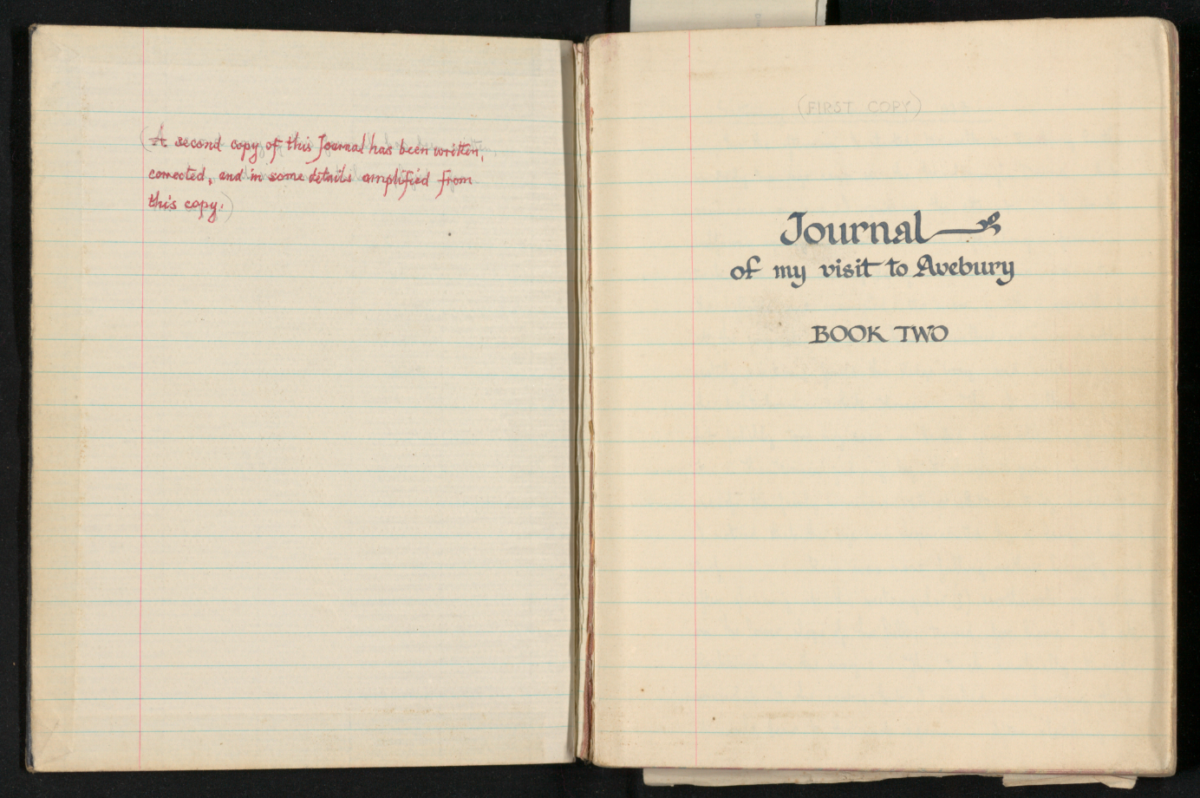Header image: Denis Grant King’s diary, Accession Number 1732623-002.
In the ‘archive scoping’ blog post I talked about our ambitions for the archive, and how we hope to embed reminders that, behind the digital files we create, there are real objects.
We’ve now been photographing for 4 months, and making good progress. Our wonderful volunteers have been tackling flat papers, photographic prints, and books which require ‘v-scanning’ (the books rest partially open in a cradle, and we use a setting in Tocosa to ‘flatten’ or ‘open up’ the pages). Each different kind of item demands a slightly different approach, whether that’s selecting lighting settings, using a cradle for conservation purposes, and whether we make use of auto crop or rotate, or do one or both adjustments manually.
Below are some of the photographs taken so far, which show a few of the strategies and decisions we’ve made.
Denis Grant King – Journal of my visit to Avebury, 1983
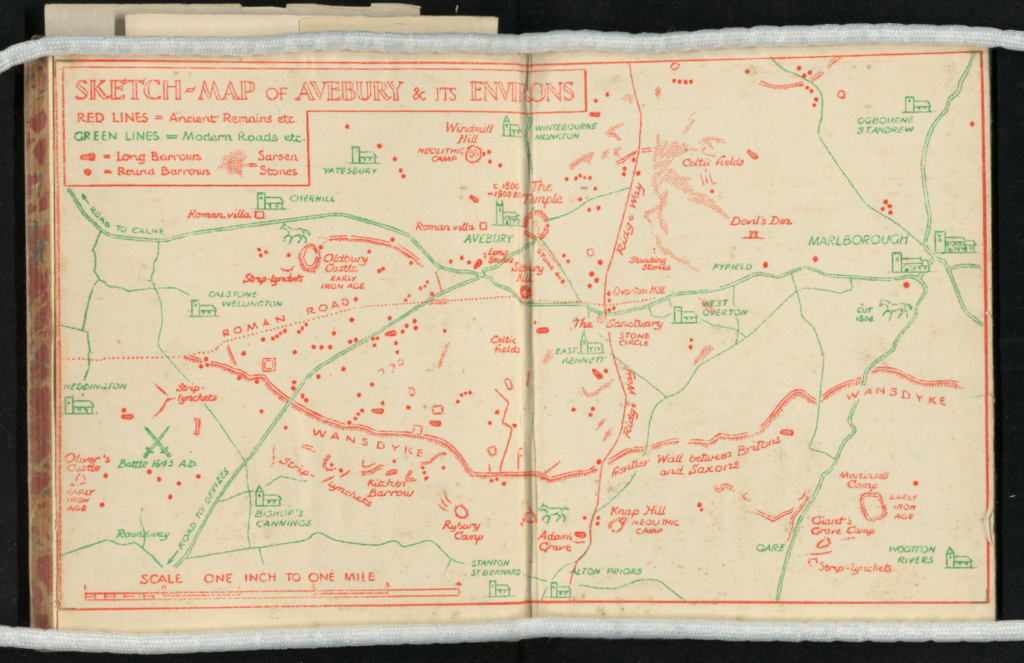
King was an archaeologist and artist, and he spent many years at Avebury, eventually working with Isabel Smith as she prepared her vitally important synthesis of the 1930s excavations (which she published in 1965 as Windmill Hill and Avebury. Excavations by Alexander Keiller, 1925–1939).
King’s diaries are lavishly illustrated and contain reflections on the personal dynamics of the group as much as the archaeology.
For this diary, we used the v-scan function in Tocosa, as it ‘flattens’ out the ‘v’ shape of the diary. We haven’t done this for all manuscripts, but there were compelling reasons for this one: 1. the double-page spread illustrations, and illustrations throughout, look better with square(ish) edges; 2. The handwriting is clear enough for us to use OCR (Optical Character Recognition) software to semi-automate the transcription process, and straighter lines of text help the OCR along. But more on OCR another time!
This map page is so beautiful I couldn’t resist uploading a version already to King’s existing Wikipedia page. We’ll be doing some more uploading to Wikipedia later in the project, as it’s a great way to get Avebury materials out there in front of many eyes!
Alexander Keiller’s 1934 excavation diary
Keiller kept diaries for each of his excavations. This is the first one for our project: covering the 1934 activity at West Kennet Avenue.
We photograph the fronts of all book-type objects in order to give more of an impression of the physical object.
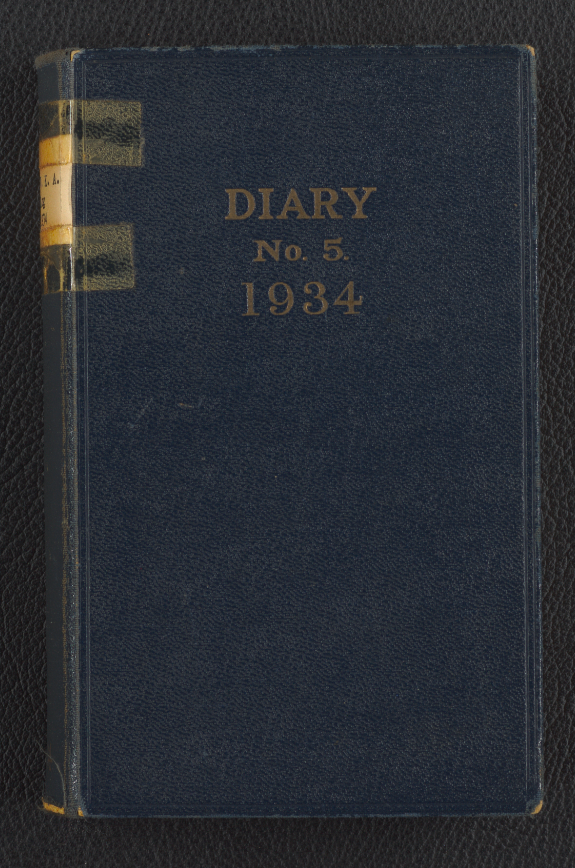
And here’s a preview of the title page, which gives a hint at Keiller’s handwriting (which is presenting a challenge to our transcription volunteers – more on that in another post!).
Unlike Denis Grant King’s Diary, for these diaries we are not using v-scan correction, so you get those angles edges from where the book is resting in the cradle. It was not so important to have square edges for these diaries, as there are no illustrations and the handwriting is almost impossible for OCR. Keeping these sloping edges keeps that reminder of the physical object properties.
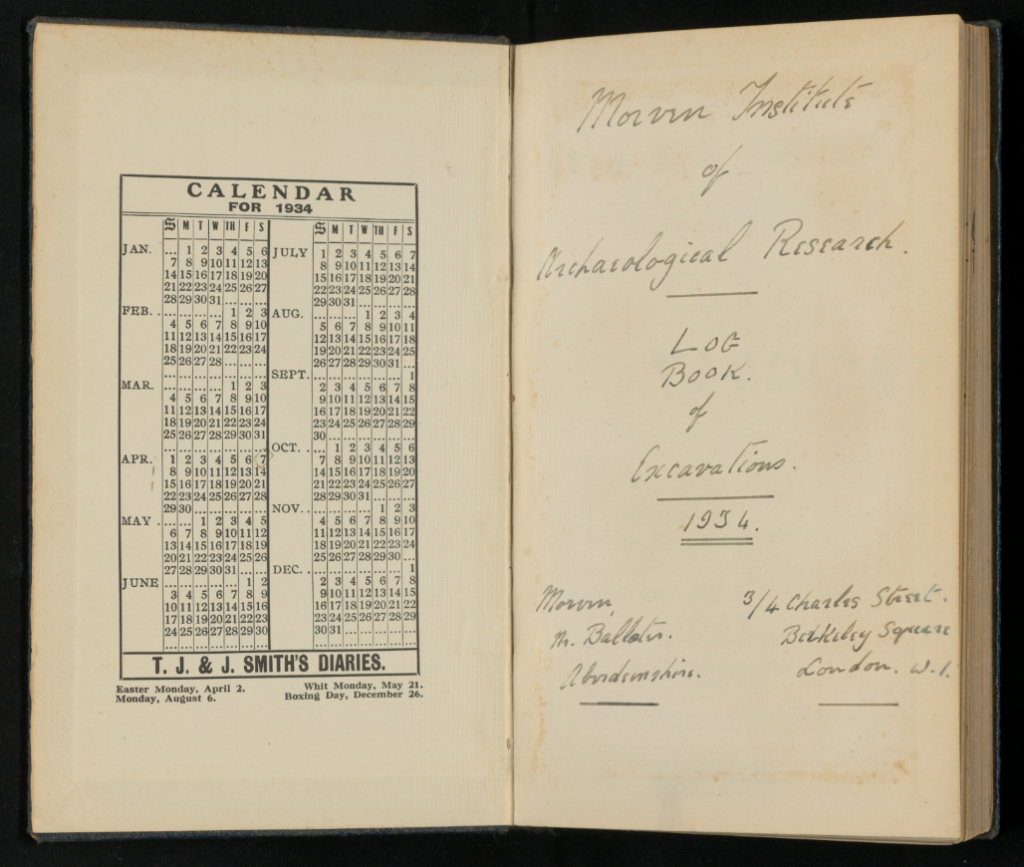
Retaining imperfection

Sometimes, letters might be a little creased as we find them in their storage boxes. So long as the crease doesn’t obscure the text, we are not smoothing out all texture. Again, this is to preserve more of an impression of the ‘real’ archive – which I hope will perhaps encourage people to come and see it for themselves. It also, I think, gives more of a sense of these objects as things which have been used – they’re not just digital files that have appeared on the internet, they have their own histories.
This letter is a reply from the museum curator regarding a query about the ‘Mary Tudor’ weight found at Avebury.
When photography goes wrong
And finally… just an example of the kind of human error that can sneak into the photography studio! Below you see the first image which was taken of item 88051525-064. Notice the ghostly hand blurring across the image! Luckily, we noticed this error and the photograph has now been re-taken, hands free.
